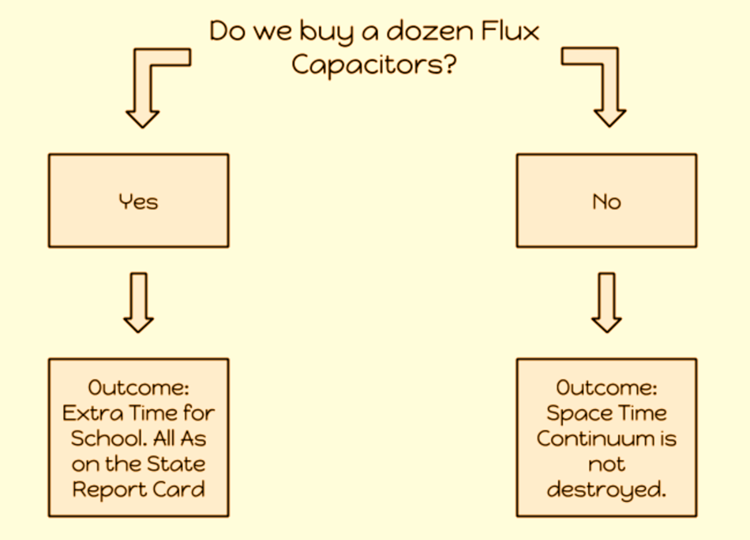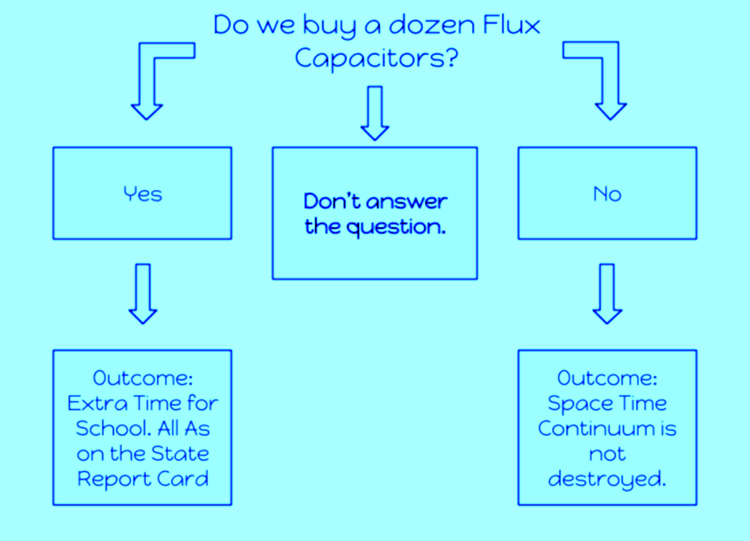Decision processes intrigue me, especially as I’ve moved into positions that require far more complex decisions on issues that have a larger impact. There is the self-reflective part of the process – why I make the decisions I make – that I’m examining through the most excellent book, Thinking, Fast and Slow (and if ever there was a book to make us question why we make decisions, that’s the book).
There’s also the process of decision-making in a group context. Decision-making in a group context can be hard. When anything is hard, I always try to use frameworks. Sometimes frameworks need tweaks. Let me explain.
Yes / No Required?
New to the job, I’ve always tried to take complex issues and break them into “if/then” and “yes/no” decision branches. The idea is to force some type of decision so that progress (or something) can result. I can then plan accordingly.
Say the district has a one-time, unique chance to order a couple of dozen Flux Capacitors for special instructional buses that would allow us to carve out a few extra months of school for our students (this would solve the unfortunate consequences of the pandemic and the kids who will be in school this Summer.
The decision process would look something like this:

And indeed, sometimes it works this way. You go with yes or you go with no – but either way you move in a particular direction. The job then becomes dealing with the good (or bad) outcomes of the decision.
But it’s Never Truly Binary, is it?
There is always a third branch in a yes/no question.

This doesn’t happen often, but when it does, not answering the question tends to spawn complexities. One of the more enlightening things I’ve learned is that no action at all is sometimes a legitimate and prudent course of action. The problem is that I haven’t always learned to decipher when this is prudent.
It’s also quite maddening for me because I tend to be action-oriented. In my inexperience, I’m left wondering questions like:
- Golly, what political implications did I miss? (And if I missed them – is a “not answer” a polite way to communicate to stop asking the question?)
- Did I not explain the if/then scenarios clearly enough?
- Is not making a decision protecting the group and/or district in some way?
- Did I totally botch the timing of asking the question?
The flowchart is a bit misleading, because not answering questions produces outcomes as well (sometimes outcomes that are remarkably like the yes/no outcomes). To me though, a don’t answer seems to result in less controllable outcomes. And that can be scary. Even when it may be the best course of action.
What do you think? Choose not to answer? You’re learning!
About the author
Zach Vander Veen has worn many hats in education, including history teacher, technology coach, administrator, and director of technology. He loves learning, teaching, traveling and seeking adventures with his family. Currently, Zach is the co-founder and VP of Development and Customer Success at Abre.io, an education management platform.










